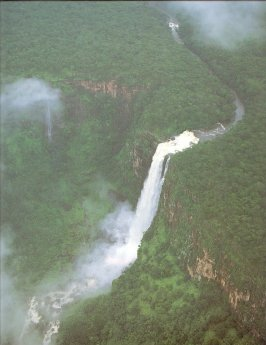Zaire River
From Roach Busters

| |
|---|---|
| Mouth | Atlantic Ocean |
| Basin countries | Central African Republic, Republic of the Congo, and Zaire |
| Length | 4,670 km |
| Average discharge | 41,800 m³/s |
| Watershed area | 3,680,000 km² |
The beautiful and majestic Zaire River (Le fleuve Zaïre in French), the eighth longest in the world, is the second longest river in Africa, and has both the second-largest flow and second-largest watershed of any river in the world. The area through which it flows, the Congo-Basin, is the second largest rain forest in the world, and home to an intriguing diversity of unique animals and beautiful people with fascinating cultures. Nearly the entire river is navigable, and long sections of it lie above and below the equator, making its flow stable; thus, the river plays a crucial role in commerce between Central African countries. It is the only river in the world that crosses the equator, and it does so not once, but twice. The capital cities of the Republic of the Congo (Brazzaville) and Zaire (Kinshasa) exist alongside the river, opposite each other. When events become too turbulent in one country, people will simply shift over to the other side, and vice versa. A great deal of trade, both legitimate and illicit, takes place between the people of the two cities. In addition to its size and natural beauty, the Zaire River is a major source of hydroelectric power for Zaire and its neighbors. Its hydroelectric potential is huge: it has the capacity to generate 13% of the world's hydroelectric power, although, sadly, much of this potential is unrealized. In fact, many portions of Zaire itself lack electricity.
The name Zaire comes from a Portuguese mispronunciation of the Kikongo word nzere or nzadi, which translates to: "the river that swallows all rivers."
